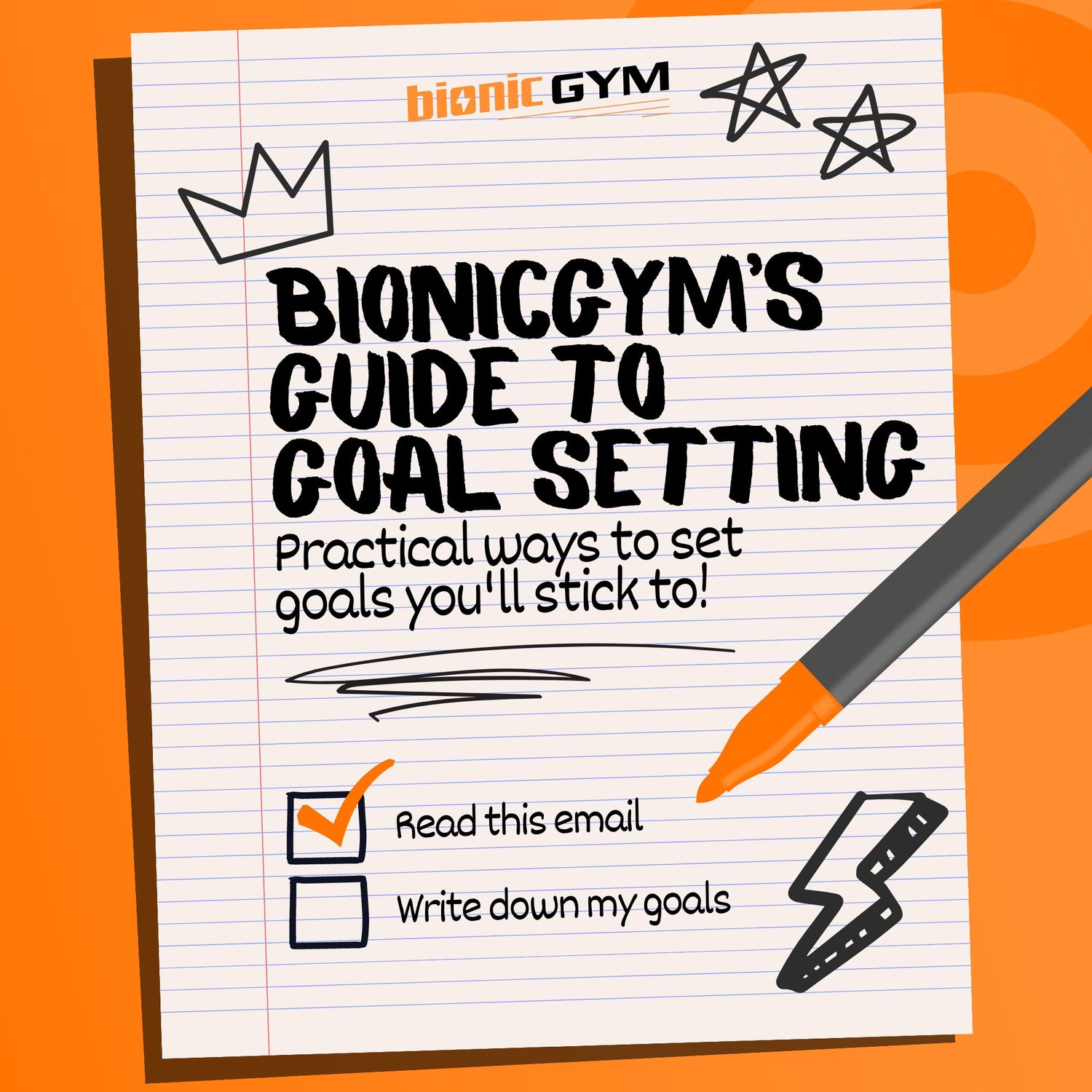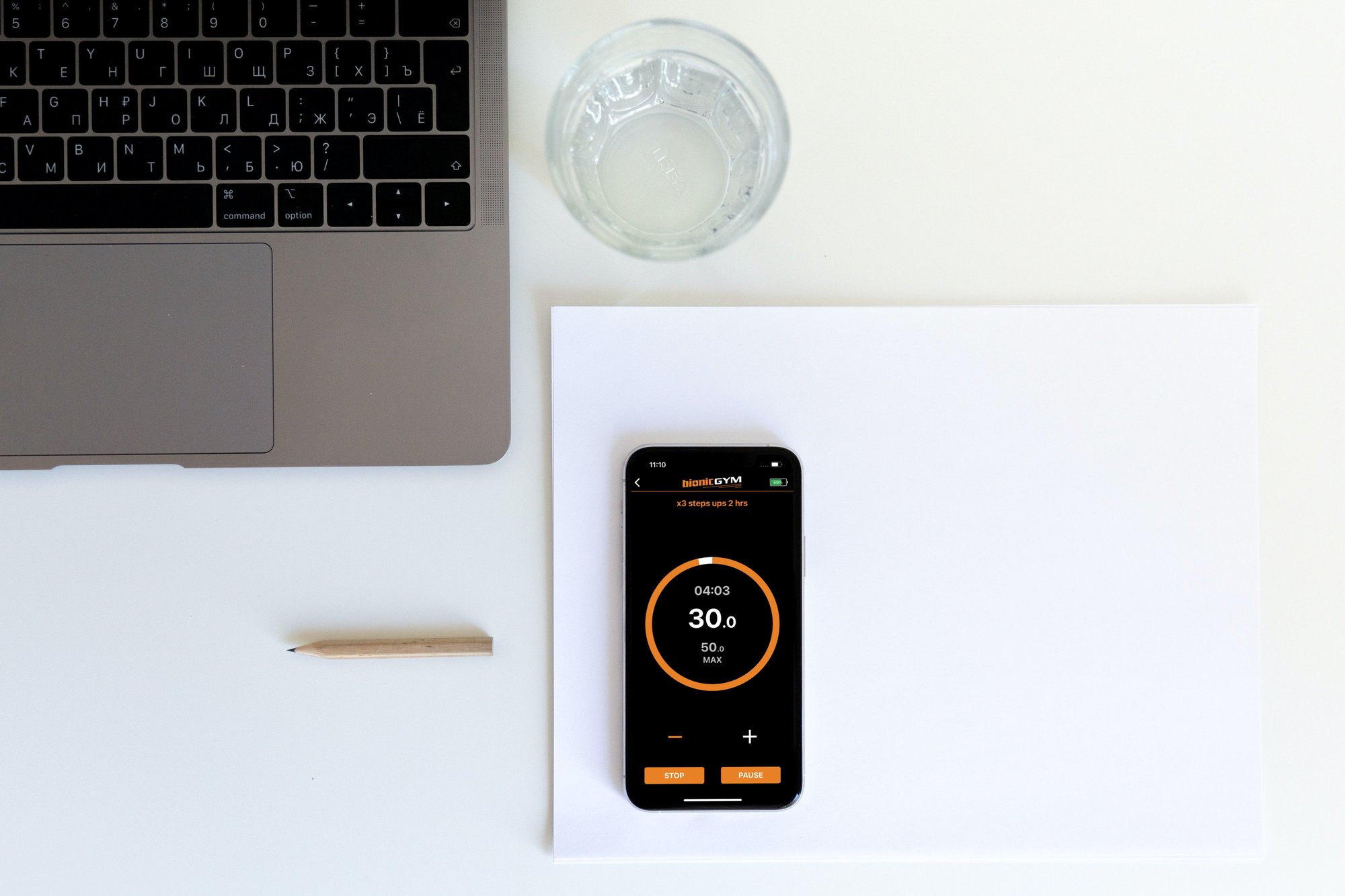BionicGym's Guide to Goals: Setting Goals that'll Stick!

Setting SMART-er Goals:
It’s very easy to see the value of setting goals. Giving yourself something to work towards rather than just doing a whole host of things you think might be good for you for the sake of it certainly leads to better results. But there’s a big difference between setting any old goal and setting a SMART goal.
SMART goals are goals that are structured in a very particular way. They are:
It’s very easy to see the value of setting goals. Giving yourself something to work towards rather than just doing a whole host of things you think might be good for you for the sake of it certainly leads to better results. But there’s a big difference between setting any old goal and setting a SMART goal.
SMART goals are goals that are structured in a very particular way. They are:
Specific:
Your goal must have a clear focus. Take into consideration what exactly you want to accomplish, why it is an important goal and who might be involved in helping you achieve it.
Measurable:
Ensure there is an easy way to measure your progress towards achieving your goal. This doesn’t necessarily have to be pounds lost, instead it could be calories burned per day, time spent exercising, pant size or a certain body measurement.
Achievable:
Arguably the most important aspect of setting great goals is ensuring it's actually possible to achieve them! Setting yourself an impossible goal only sets yourself up for failure!
Relevant:
Your goal must matter to you in some way big or small. If this isn’t the case you won’t get that sense of achievement as you make progress. Be sure to consider how making progress towards your goal will make life easy, better, more enjoyable or all three!
Timed:
Give yourself a deadline by which you aim to achieve your goal. This will give you an easy way to keep one eye on whether you’re behind schedule, ahead of schedule or perfectly on track! Just be sure to consider whether the timeframe you’ve set for yourself is in keeping with your goal being Achievable.
Here’s an example: I want to lose 20 pounds in 3 months so I look good and feel great in time for my sister’s wedding.
This goal is specific and measurable because we have said exactly how many pounds we want to lose, it’s achievable as losing 20lbs within 3 months is a realistic amount of weight to lose, it’s relevant as it is important to me that Ifeel good in time for a big event, and it’s timed as I have given myself 3 months to do it. Simple!

Breaking Down the Process:
Having set ourselves a goal that is SMARTit’s now time to break that goal down into smaller steps. Let’s take the SMART goal we set from last time as an example:
I want to lose 20 pounds in 3 months so I feel great in time for my sister’s wedding.
This is called the outcome goal; it is what we want to happen by the end of the time we set for ourselves. This outcome goal is our overall focus; it’s the masterpiece we paint over weeks and weeks of hard work. But sitting down to paint a masterpiece can seem very daunting. If we break it down though into individual brush strokes it all seems a lot more manageable.

This outcome goal is our overall focus; it’s the masterpiece we paint over weeks and weeks of hard work. But sitting down to paint a masterpiece can seem very daunting. If we break it down though into individual brush strokes it all seems a lot more manageable.

These individual brush strokes are called process goals, and they are quite literally the smaller goals we have to complete as part of the process to achieve our larger outcome goal.
So what would these process goals look like if our goal was to lose 20 pounds in 3 months in time for our sister’s wedding?
Well 20 pounds over three months works out at a little less than 7 pounds per month, and 1-2 pounds per week. Already our goal seems a lot more manageable.
Next we need to break this down further into how:
Well to lose weight we know we need to be in a calorie deficit, and a calorie deficit of 500-1000 calories per day works out at roughly 1-2 pounds per week. So now we need to figure out how we are going to achieve this daily calorie deficit.
In order to steadily and sustainably lose weight we need to incorporate more exercise and maintain a healthy diet. To do this we may set the process goals that we are going to do 4 hours of BionicGym per day while working at our desk. We are going to use Glucose Gobblers at a low intensity so we can maintain our focus while supercharging our calorie burn. We are going to use our smartwatch to track how many calories we burn. On top of this we are going to make the most of the great weather and try to go for a walk at least 3 times per week for 1 hour. We plan to increase the number of calories we burn each week by 3500-5000 which equates to 500 to (roughly) 700 extra calories per day. Awesome, that’s the exercise sorted!
For our diet we decide to make some healthy substitutions to our diet each day, swapping out our sodas for water, preparing a low carb lunch each day in place of the convenient fast food option and for our dinners we choose lean proteins like turkey and lean beef and reduce the amount of carbs like rice, pasta and potatoes on our plates for healthy vegetables. By eating more protein and fibre in each of our meals we also anticipate being more satiated meaning we are less likely to want to snack throughout the day. By doing all of this we hope to decrease our calorie intake by another 500-750 calories per day in order to maintain a calorie deficit and back this up by tracking our calories using a calorie tracking app.
So we’ve now gone from having the outcome goal of I want to lose 20 pounds in 3 months so I look good and feel great in time for my sister’s wedding to having the following much smaller goals:
Do Glucose Gobblers every day for 4 hours while I work to burn an extra 500 calories per day.
Go for three 1hr walks per week to burn a few hundred more calories (and enjoy the great evening weather!).
Track daily calories using the tracker app of choice.
At the start of each week meal prep a low carb lunch to have in work and eat a lean protein for dinner each night and substitute out our usual side of pasta, rice or potatoes for healthy vegetables in order to decrease our caloric intake by roughly 500 calories per day.
By breaking our SMART outcome goal down we have turned it into a simple list of daily/weekly tasks that seem a lot more achievable with a little bit of planning and preparation each week.
The Key Takeaways:
In conclusion, setting SMART goals is a powerful tool for achieving success in any area of life, including weight loss and fitness. By making your goals Specific, Measurable, Achievable, Relevant, and Timed, you can create a roadmap for success that is clear, manageable, and motivating. Breaking down your outcome goals into smaller process goals can make the journey towards your goal more feasible and achievable. So, whether you're aiming to lose 20 pounds for a special event or pursuing any other goal, remember to set SMART goals and break them down into smaller, actionable steps to set yourself up for success. Get started today and watch yourself make progress towards your desired outcome!

